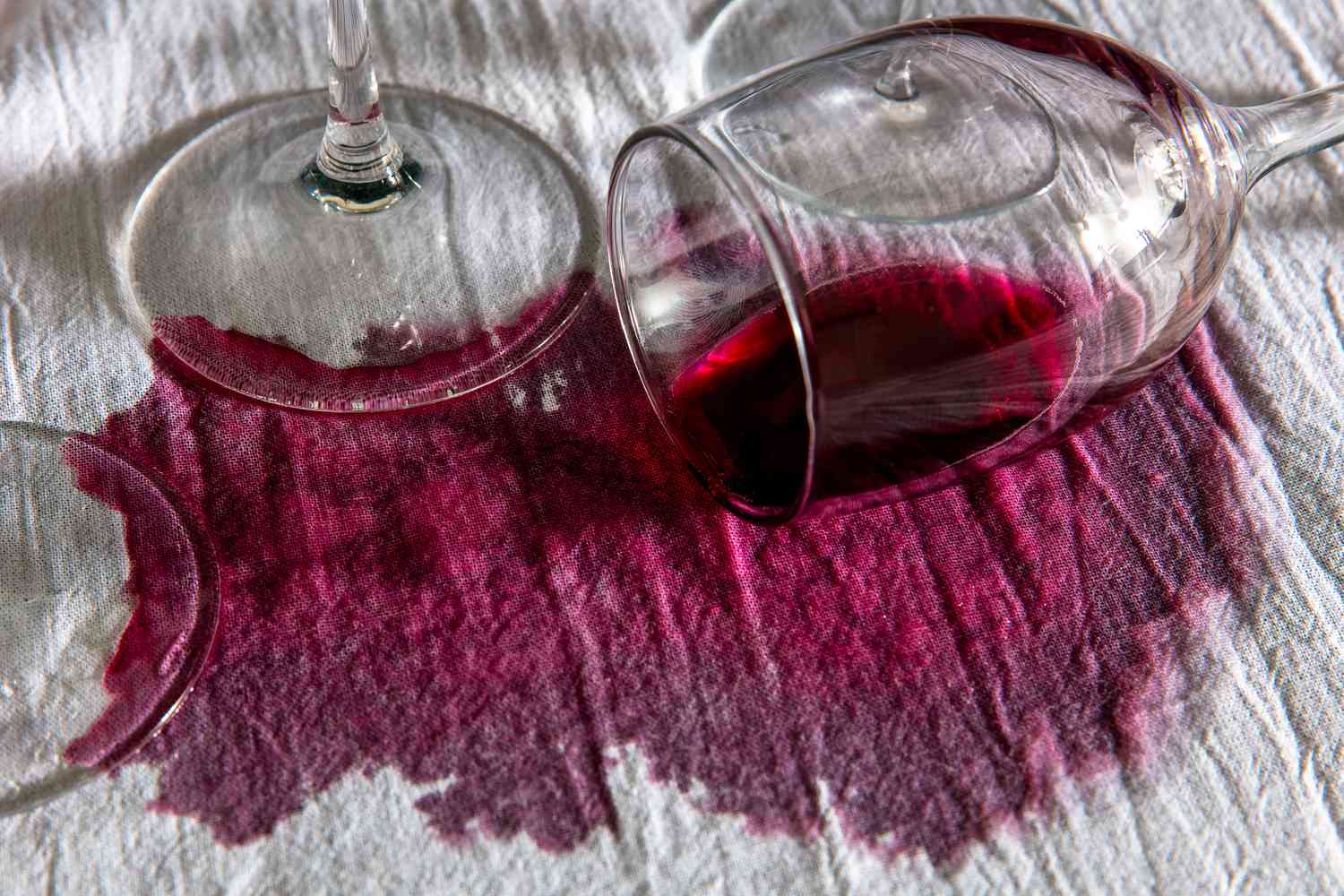There’s something about red wine that makes it feel like a reward at the end of a long day. But that relaxing glass can quickly turn an evening from restful to stressful if it ends up on the carpet, upholstery, or your favourite sweater.
If you’ve ever knocked over a glass during dinner or had a guest leave a trail across the rug, you’ll know just how frustrating and persistent those stains can be.
This guide shows you how to handle red wine stains calmly and effectively without damaging your surfaces.
What Makes Red Wine Stains Difficult To Deal With?
Red wine contains tannins and natural pigments, which are known for their ability to stay in the mouth. The liquid quickly soaks into porous materials, especially fabric or carpet fibres, and binds with them. The longer it sits, the deeper it sets, making removal more complicated.
Unlike tea or coffee, red wine also contains alcohol, which can help the pigment spread more quickly before it evaporates.
That’s exactly why a delay in treatment can turn a simple spill into a lasting blemish. However, acting promptly and using the right method can make all the difference in the world.
Initial Steps You Should Take
When red wine hits the surface, the most important thing is to stay calm. Most people will start rubbing or scrubbing immediately in panic, which tends to spread the stain further. Instead, blot gently using a clean white cloth or paper towel to absorb as much liquid as possible.
Cool water is usually the safest first step. Pour a small amount directly over the stain and continue blotting. This can help dilute the wine and lift some of the pigment before it has time to dry.
At this stage, avoid using hot water or harsh cleaning agents. These can set the stain further, especially if you’re dealing with delicate fabrics or certain carpet materials.
Best Methods for Different Surfaces
Red wine stain removal largely depends on where the liquid has landed. Carpets, upholstery, and clothing each require slightly different care.
Carpets
Once you’ve blotted the area and added cool water, you can use a mild detergent solution. Mix a small amount of dishwashing liquid with cold water and dab the area using a clean cloth.
Work from the outside of the stain inward to avoid spreading it. Once it starts to lift, rinse with clean water and blot dry.
Upholstery
When using a cleaning product on upholstered furniture, it’s best to test it on a hidden area first. That’s because some fabrics are not compatible with water or detergents. If safe, you can follow the same method as above—blot, rinse, clean gently, and dry thoroughly.
Clothing
Clothing stains can often be treated by running cold water through the fabric from the back of the stain. Then, pre-treat with a gentle stain remover and wash according to the garment label.
Avoid tumble drying until the stain is fully gone, as heat can lock in any remaining pigment, which is exactly what you’re trying to avoid.
Household Remedies: What Works and What Doesn’t
You’ll often hear about home remedies involving salt, baking soda, vinegar, or soda water. Some can be helpful, while others should be used with caution.
Salt can absorb moisture, but it’s only effective when applied immediately and before the wine has dried. After blotting, sprinkle it on and leave it for a short time before vacuuming up. However, it doesn’t always work on deeper or older stains.
Baking soda may help on carpets when combined with water to form a paste. Yet, it needs to be applied gently and left to dry before vacuuming.
Moreover, white vinegar can neutralise red pigments, but it should be used carefully. Combining it with dishwashing liquid in a diluted solution works best for carpet or upholstery.
Soda water is also another popular option, but its effectiveness varies. The carbonation doesn’t always lift stains on its own. It’s the extra water and blotting that tend to be more helpful.
For tougher stains, some turn to hydrogen peroxide. It’s a stronger option, but it comes with risks. Undiluted, it can bleach fabric, so it should always be mixed with water and tested on an inconspicuous area first.
It can work well on light-coloured carpets or white cotton, but steer clear of using it on darker fabrics or anything delicate.
Another potent option is ammonia, though it should be used sparingly. It can help with stubborn stains, but it has strong fumes and can damage natural fibres like wool or silk.
Most importantly, never mix ammonia with bleach. This combination releases toxic gas and poses serious health risks.
Speaking of bleach, it’s best left as a last resort. While it can remove the red pigment, it’s just as likely to ruin the fabric’s original colour, especially on carpets or upholstery. It’s only really suitable for white cotton items, and even then, use it with care.
Whatever method you try, always ventilate the area, wear gloves, and go over care labels before applying any chemical product.
When to Call a Cleaning Service
Sometimes, despite your best efforts, a red wine stain is too stubborn to budge. This is particularly common with light-coloured carpets, older stains, or delicate fabrics that can’t handle repeated treatment.
In this case, it’s often wise to call in professional cleaning services. A specialised cleaning team will use commercial-grade products and equipment that lift deep-set stains without damaging materials. It’s also safer for antique furniture or luxury carpets.
Prevention Is Often Simpler Than Removal
To avoid facing red wine stains again, consider a few precautionary steps. Choosing dark-coloured tablecloths, using rugs in high-traffic areas, or keeping cleaning cloths nearby during gatherings can all help.
Some homeowners also opt for stain-resistant carpet treatments, which make future spills easier to clean and remove.
It’s also worth setting some basic house rules when entertaining, such as placing drinks away from soft furnishings or serving wine at a table rather than on the sofa.
While it’s impossible to prevent every accident, having a plan in place gives you peace of mind.
Conclusion
Red wine stains are frustrating, but they’re rarely permanent if handled quickly and correctly. With a steady hand, a bit of patience, and the right approach, you can often remove them without lasting damage.
If you’re ever unsure about what you’re doing or you’re just short on time, professional cleaning services are there to help.
A clean home doesn’t need to come at the cost of your comfort. With preparation and support, those spills don’t need to leave a mark or ruin your day.










